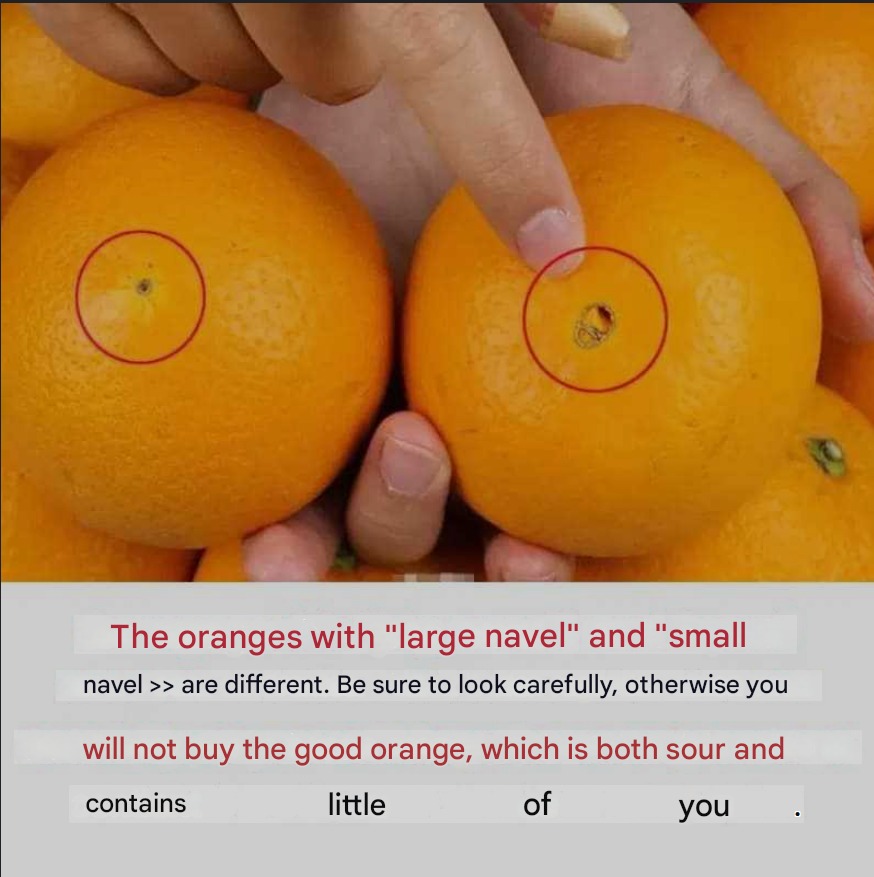ADVERTISEMENT
The Oranges with “Big Navel” and “Small Navel” Are Different: Here’s How to Tell Them Apart
Oranges are one of the most beloved fruits, often enjoyed for their sweet, tangy flavor and juiciness. Among the various types of oranges, you might have noticed some with a “big navel” and others with a “small navel.” While both types are delicious, these oranges are not the same, and understanding the differences can help you choose the best one for your needs.
In this article, we’ll explore the differences between big navel and small navel oranges, what makes them unique, and how to tell them apart. Let’s dive into the world of navel oranges!
What Are Navel Oranges?
Before we compare the “big navel” and “small navel” oranges, let’s start with a brief explanation of what navel oranges are. Navel oranges are a variety of seedless oranges, typically round and easy to peel. They are named after the small, navel-like formation on the blossom end of the fruit, which is a remnant of the flower that gave birth to the orange.
This variety is particularly popular because of its sweetness and juiciness. Navel oranges are perfect for snacking, juicing, and even using in salads or desserts. The “navel” is the key identifier, and this trait is consistent across navel varieties—however, there can be subtle differences between types, particularly the size of the navel.
What Is the Difference Between “Big Navel” and “Small Navel” Oranges?
The primary distinction between big navel and small navel oranges lies in the size and shape of the navel itself. Here’s a closer look at the differences:
1. Big Navel Oranges
- Size of Navel: Big navel oranges have a noticeably larger, more prominent “navel” or formation at the bottom of the fruit. This navel often looks like a distinct indentation or protruding shape.
- Appearance: The skin of big navel oranges tends to be a little thicker, and the fruit itself is often larger than small navel oranges.
- Taste and Texture: Big navel oranges are often sweet and juicy, but because of their thicker skin, they may require a little more effort to peel. The fruit inside is generally firm and has a great balance of tang and sweetness.
- Varieties: The Cara Cara and Washington navel oranges are examples of varieties with a larger navel. These tend to be sold in supermarkets and are highly prized for their sweetness and large size.
2. Small Navel Oranges
- Size of Navel: As the name suggests, small navel oranges feature a smaller, more subtle navel. It’s not as pronounced as the “big navel” variety, and sometimes it can be almost flat or faint.
- Appearance: Small navel oranges are usually smaller in size, with thinner skin. This makes them easier to peel and sometimes results in a more delicate texture.
- Taste and Texture: While still sweet and juicy, small navel oranges tend to have a slightly milder taste compared to big navel varieties. They are typically more tender, making them a popular choice for those who prefer a less fibrous texture.
- Varieties: Varieties such as the Valencia or Navelina oranges typically have smaller navels. These varieties are often harvested earlier in the season and can be found in many grocery stores.
How to Tell Them Apart
Telling a big navel from a small navel orange is relatively simple if you know what to look for. Here’s how to distinguish between the two:
- Examine the Navel: The most obvious difference is the size of the navel. A large, prominent navel will indicate a big navel orange, while a smaller, less pronounced navel points to a small navel orange.
- Size of the Fruit: Big navel oranges are typically larger and rounder than small navel oranges. Small navel oranges tend to be more compact in size, making them easier to eat in a few bites.
- Peel Thickness: Big navel oranges often have thicker, t
